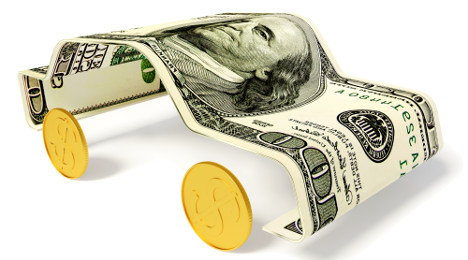Auto defaults remain stable in December

By subscribing, you agree to receive communications from Auto Remarketing and our partners in accordance with our Privacy Policy. We may share your information with select partners and sponsors who may contact you about their products and services. You may unsubscribe at any time.
NEW YORK –
With observers saying, “the consumer economy looks good,” the auto loan portion of the S&P/Experian Consumer Credit Default Indices remained steady for December.
Analysts from S&P Dow Jones Indices and Experian determined the auto loan default rate was unchanged from November with a 1.04 percent default rate in December.
Compared to a year earlier, the latest reading was just 2 basis points higher than what analysts spotted last December.
Meanwhile, the most recent composite rate — a comprehensive measure of changes in consumer credit defaults — came in at 0.97 percent in December, unchanged from the previous month.
Analysts indicated the bank card default rate decreased 42 basis points in December, recording a default rate of 2.49 percent. The first mortgage default rate increased 2 basis points, registering 0.84 percent for December.
Looking geographically, S&P and Experian noticed three of the five major cities saw their default rates decrease during the month of December.
Subscribe to Auto Remarketing to stay informed and stay ahead.
By subscribing, you agree to receive communications from Auto Remarketing and our partners in accordance with our Privacy Policy. We may share your information with select partners and sponsors who may contact you about their products and services. You may unsubscribe at any time.
Los Angeles reported a default rate of 0.65 percent, down 9 basis points from the November default rate.
Miami's default rate dropped 4 basis points from the previous month to 1.44 percent.
Chicago's default rate decreased 3 basis points from November, reporting in at 1.00 percent in December.
New York's default rate rose to 1.04 percent, up 9 basis points from the prior month.
Dallas reported a 22-basis point increase with a default rate of 1.10 percent in December.
After looking at all of the most recent data, David Blitzer, managing director and chairman of the index committee at S&P Dow Jones Indices, said, “The consumer economy looks good.
“Consumer credit default rates are low and stable, and consumer sentiment measures are upbeat,” Blitzer continued. “Personal consumption expenditures rose 2 percent in 2015 (December to December) with spending on durable goods up 4.8 percent for the same period.
“Auto sales continued strong at the end of last year. Real disposable personal income rose 3.7 percent in the year to the third quarter of 2015. There was no response among consumers to the Fed's recent rate increase, no rush to apply for mortgages,” he went on to say.
Blitzer closed his latest analysis by touching on what’s been happening in the stock market.
“While the economic news on Main Street is good, the New Year opened with turmoil on Wall Street as stock prices dropped in the opening week, and the market crossed the 10 percent correction mark in the second week,” Blitzer said.
“The two factors being cited for weakness on Wall Street are the strong dollar and weak oil prices,” he continued. “For consumers, both of these are good stories — cheap gas and lower prices on imports.
Other parts of the economy also favor consumer spending: the unemployment rate is down to 5 percent and the weekly initial unemployment claims reports signal further economic growth,” Blitzer added.
“Inflation remains low, lower than the Federal Reserve would like,” he went on to say. “Consumers aren’t showing any signs of anxiety driven by the stock market.”


